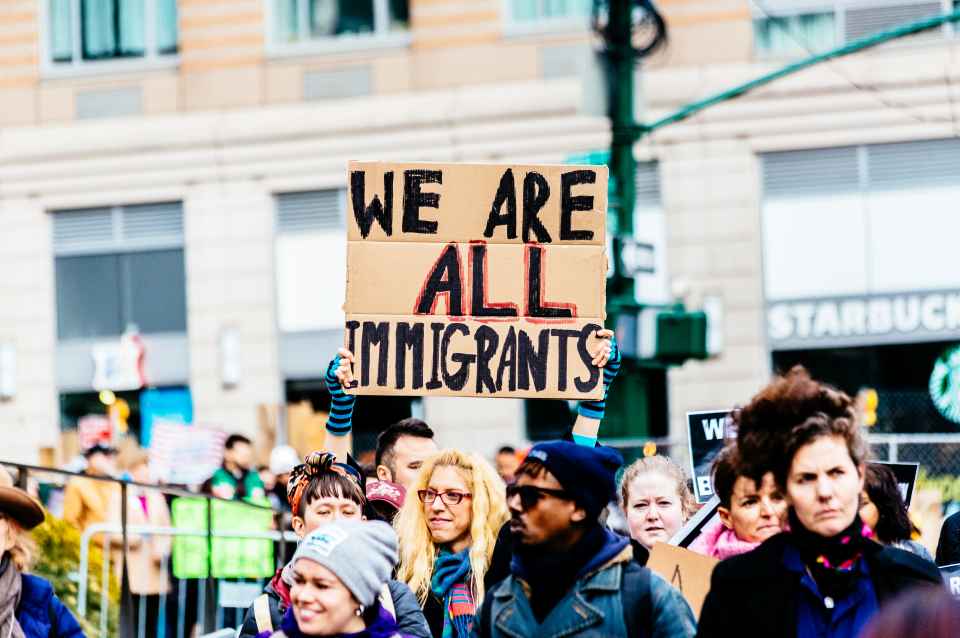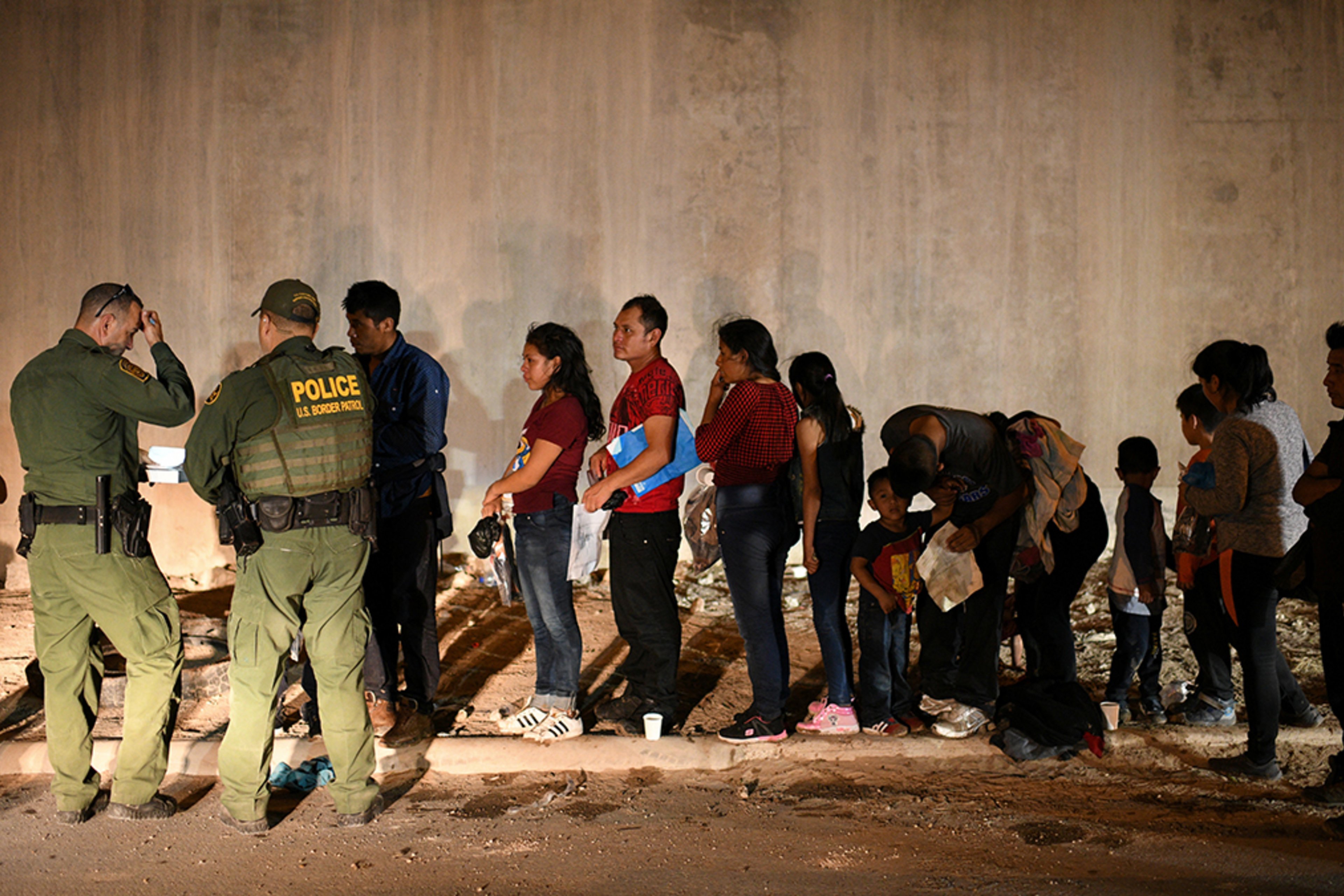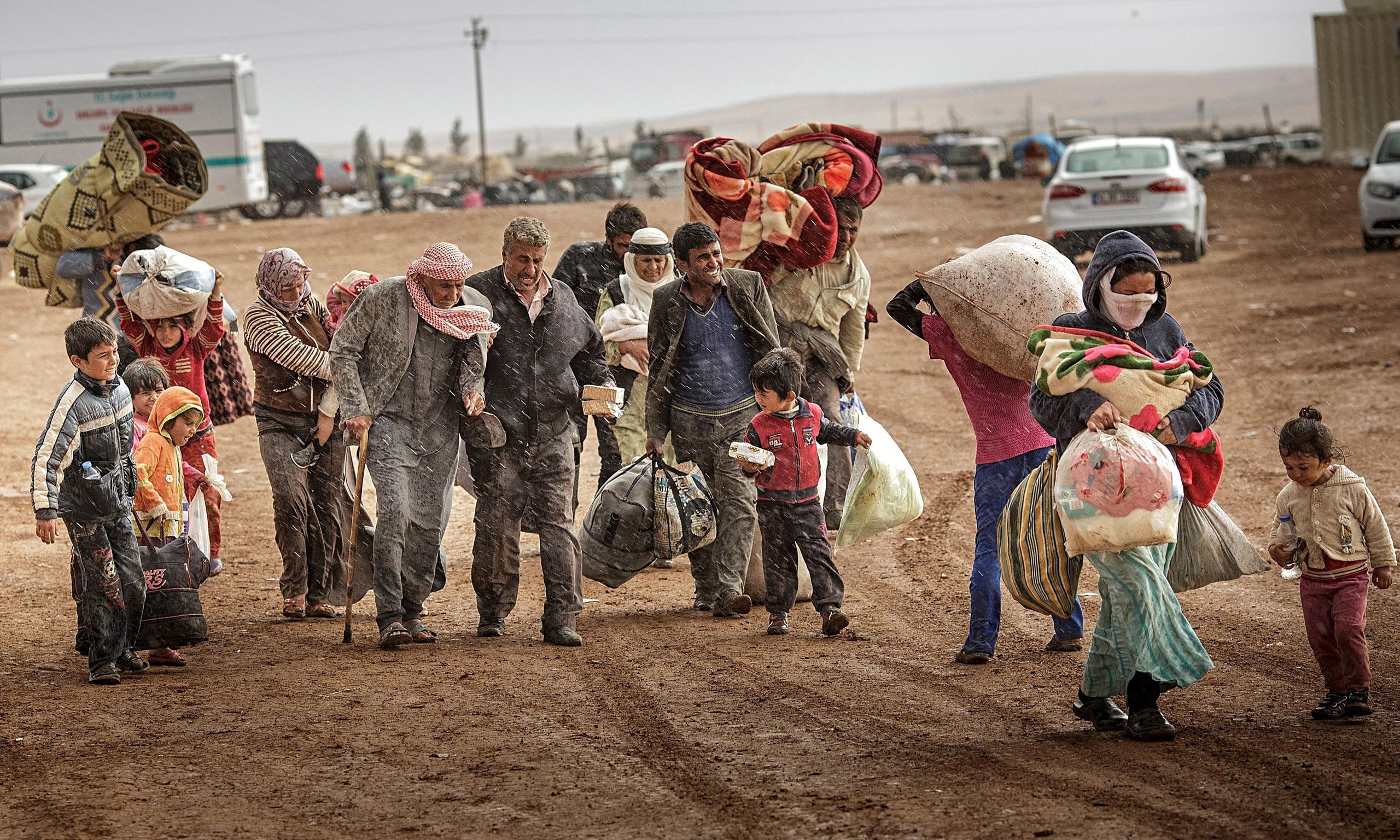The recent immigration crisis on the Belarus-Polish (EU) border can be repeated and even more to include and Lithuanian (EU) border with Belarus with unpredictable political results. Nevertheless, the 2021 November refugee crisis on the eastern border of the EU once again open the question of immigration, refugees, and asylum seekers from both theoretical and practical points of view.
As a sociological, economic, and political phenomenon, the worldwide immigration process existed all-time in history being always high. It is estimated that in recent decades, each year there are up to some four million people who are moving from one country to another for different reasons (social, economic, political, etc.). For instance, at the end of the last century, immigrants totaled circa 130−135 million thus representing up to 3% of the global population; they live in a country other than their country of origin. However, there is a tendency of their constant significant increase in numbers across the globe but the focal direction of their moving is toward Western post-industrial societies of West Europe, the U.S.A, or Canada. The numbers and pressure which they are putting on job opportunities and welfare capabilities in the countries they enter are raising troubling questions for the majority of the global economic powers. Basically, the crucial questions became: 1) Who should be allowed in; and 2) At what point should immigration be selectively stopped?
What is migration and why the people are migrate?
Technically speaking, migration is the movement of individuals or groups from one place to another. Geographically and politically, migration can be of both natures: domestic and international, but both are under restrictions, although, in practice, it is more restricted at the international level rather than on the domestic. In essence, people migrate for several reasons, such as to work, to reunite with family members, to get asylum, or to study. About 1/3 of all migrants move from developing to developed (post-industrial) countries, while most move either between developing or between developed countries.

Transnationalism, the increased ability in a globalized world of migrants to stay in touch with their communities of origin, facilitates circular and temporary migration by making it easier for migrants to move between places several times. However, depending on personal resources and nationality, there are significant opportunities and barriers to migration. Practically, the migrants from the poorest states are going to be the least mobile for the reason that usually lack the (financial) resources to move (but if they will have financial resources probably they will not wish to immigrate). People from poorer states or countries involved in civil wars and conflicts as well tend to be subject to the most limiting visa restrictions, as other states worry about the inflow of asylum seekers or low-skilled workers.
Due to the restrictions on migration, many migrants undertake precarious and in some cases lethal trips in order to seek asylum, improve their economic opportunities, a combination of both, or because some other reasons are not necessarily of economic nature.
The main features of immigration and immigration policies
The migration of humans, however, was not uniform across time and space. At certain times, famines, wars, or natural disasters caused large movements of people of both features: temporarily or permanently. Temporary migrations occur when people wait until it is safe to return to their homes. In the case of warfare, such migrants are called refugees or temporally displaced people due to the military actions and destructions in their places of origin. Nevertheless, more and more migrants who cannot make adequate livings in their home countries are making permanent moves to more developed states especially to those called welfare (post-modern/post-industrial) states. During the last decades, the destinations of the focal migration streams are into North America, the oil-rich states of the Middle East, and the post-industrial economies of West Europe and Japan.
According to some sociological investigations, today, there are seven of the world’s wealthiest nations (G7) which are shelter some 1/3 of the migrant population across the globe, but less than 1/5 of the total population of the world. Nonetheless, despite the fact that there are disparities in job opportunities among national economies, there is little reason to expect such an international migration trend to decline or end.
There are those countries, like the U.S.A., that have long been a destination for immigrants and, therefore, they have a history of developed policies to determine who has a preference and who does not to enter the country as an immigrant. However, in practice, often, clear racial or ethnic biases are built into these policies. For instance, the U.S. administration was giving in the 1920s preference to immigrants from West Europe, while at the same time making it difficult for residents of South and East Europe, Asia, and Africa to enter the country. That was clear discrimination of the immigrants on both racial and ethnic foundations. One of the saddest periods of the history of immigration to the U.S.A. was when in the second part of the 1930s and first years of the 1940s, the federal government of the U.S.A. refused to lift or loosen restrictive immigration quotas in order to allow Jewish refugees to escape the terror of the Nazi regime and holocaust. In this respect, it is the well-known case of the S.S. St. Louis, with 900+ Jewish refugees on board from occupied Europe, to which the U.S. authorities denied permission to land in the U.S.A. in 1939 and, consequently, the ship was forced to sail back to Europe, where it is estimated that at least several hundreds of its passengers later died at the hands of the Nazis.
 In the U.S., since the 1960s, immigration policy encouraged the immigration of the people with relatives already had in the U.S. followed by the immigrants with the skills. In practice, however, such change in immigration policy significantly altered the pattern of sending nations as previously, Europeans dominated, but for the last 50 years, immigrants primarily have been coming from Latin America and Asia. Practically and statistically, it simply means that an ever-growing proportion of the U.S. is going to be of Asian and Hispanic origins. But a negative reaction to such development of the U.S. immigration policy is to a large degree, fear and opposition to such growing racial and ethnic diversity concerning immigration policy. Generally, across the globe, domestic people are extremely concerned that the newcomers will not reflect the cultural and ethnic/racial heritage of the host nation.
In the U.S., since the 1960s, immigration policy encouraged the immigration of the people with relatives already had in the U.S. followed by the immigrants with the skills. In practice, however, such change in immigration policy significantly altered the pattern of sending nations as previously, Europeans dominated, but for the last 50 years, immigrants primarily have been coming from Latin America and Asia. Practically and statistically, it simply means that an ever-growing proportion of the U.S. is going to be of Asian and Hispanic origins. But a negative reaction to such development of the U.S. immigration policy is to a large degree, fear and opposition to such growing racial and ethnic diversity concerning immigration policy. Generally, across the globe, domestic people are extremely concerned that the newcomers will not reflect the cultural and ethnic/racial heritage of the host nation.
The possible consequences of migration
Nevertheless, despite people’s fears about the possible changes of the cultural and ethnic environment in their native states by the immigrants, it can be said that, in principle, immigration is providing many valuable functions for the host country. What is most important, for the receiving society, the immigration can alleviate labor shortage even tremendously positively like in the areas of health care, physical work, and technology like in West Europe and the U.S.A. In 1998, the U.S. Congress debated not whether individuals with technological skills should be allowed into the country, but just how much to increase the annual number of them.
On the other side, for the sending nation, migration can relieve economies unable to support large numbers of people followed by the large amount of money that immigrants (gastarbeiter/guest workers) are annually sending back to their home nations. As a matter of example, worldwide immigrants from Portugal alone are sending some 5 billion U.S. dollars annually back to Portugal according to the official data by the World Bank.
In all G7 countries, there is considerable research done on the impact of immigrants on a domestic economy by which is generally presented that it has a positive impact on the national economy, although areas experiencing high concentrations of immigrants may find it difficult to meet short-term social service needs. In principle, when migrants with skills or educational potential leave developing states, it is hurting the economies of those nations for the very objective reason that no amount of payment back home can make up for the loss of valuable human resources from poor nations.
International migration and national safeguard
It has to be known that there is no coherent global governance of international migration, as states safeguard their ability to exert sovereign control over the question of who has the right to enter their territories. There are several international and intergovernmental bodies tasked with certain aspects of international migration like the OUN High Commissioner for Refugees or the International Organization of Migration. Within the EU system of the Schengen Zone, there are no internal border controls, but at the same time, the EU states are currently cooperating to put more strict physical control/barriers over the external EU borders especially after the 2021 November immigrant crisis on the Belarus-Polish border. Other states as well have bilateral or/and multilateral agreements to control and manage migration.
The process of migration is affecting the migrant, the host country, and the sending country but in different ways. Migrants benefit from enhanced opportunities in several areas and often gain access to better education and healthcare. However, they as well can be in many cases victims of exploitation and trafficking. The host country benefits, for example, economically or/and culturally (for instance, by ethnic culture restaurants, etc.). Even though the economic impact tends to be positive overall, by increasing growth and innovation, some low-skilled domestic workers may suffer from the increased wage and job competition. The sending country, for example, benefits from financial flow from remittances that creates jobs and increase consumption, from increased international links and the new skills, knowledge, and ideas that returning migrants bring.
Migration from developing to developed countries has been identified as an effective way to improve development. Poorer sending countries may, however, be affected by “brain drain”, a shortage of highly skilled workers, as these seek better opportunities abroad. However, the problems can arise on ethnic, social, political, confessional, or racial bases when the immigrants are of different racial, ethnic, or confessional backgrounds from the host population. For instance, West Europeans often refer to “foreigners”, but the term does not necessarily mean one of foreign birth. In Germany, “foreigners” refers to people of non-German ancestry, even in the cases that they are born in Germany. Nevertheless, the “foreigner” does not refer to people of ethnic German ancestry born in another country who may choose to come to their “mother country” (Germany).
For sure, fear and dislike (xenophobia) of newcomers especially when they are of different ethnic origins divide countries across the globe. Some political parties in the West are building their political programs exclusively on the immigration question. For instance, in 1998, the One Nation Party of Australia had a platform of removing all illegal immigrants from the country and taking their property for the sake to cover deportation costs.
Nevertheless, employment is a crucial area of monitoring the effects of social and economic disadvantages due to factors like gender, age, class, or ethnicity. Many sociological types of research and studies on the position of immigrants or ethnic minorities in the labor market have revealed patterns of disadvantage in terms of occupational distribution, wage levels, discrimination in hiring and promotional practices, and unemployment rates.
Political asylum refugees
Political asylum refugees are of the special immigration category as they are migrating (escaping) from their home countries to another one for political (persecution) reasons rather than for economic benefits. A new country for them means a place safe from persecution – a country that offers protection to a victim of torture or oppression politically founded. It is important to notice that the 1948 Universal Declaration of Human Rights (Article 14), states that “Everyone has the right to seek and to enjoy in other countries asylum from persecution”, and the 1951 OUN Convention and Protocol Relating to the Status of Refugees requires the duties of states to uphold the rights and benefits of people displaced from their native country. More precisely, under this agreement, nations are obliged to protect refugees who are fleeing persecution in their own country and treat them at least as well as other foreign nationals on their territory.

Nevertheless, practical enforcement of these commitments is left to individual countries, and considerations of practical and political constraints have meant that the rights of those seeking political asylum have not always been upheld. In practice, there are many cases when it is difficult for victims of persecution to prove the circumstances in which they suffered, and for officials to distinguish between those refugees for political reasons and those who wish to migrate for economic benefits.
Historically, from the mid-1990s, the politics of asylum seekers moved sharply up the political agenda in West Europe for the very reason as many more asylum seekers tried to enter, especially from ex-Yugoslavia at that time involved into the bloody civil war and Afghanistan. They presented an opportunity for the right-wing politicians and political parties (like the French National Front) to enhance their scores at the elections. However, at the same time, the political asylum seekers are presenting a difficulty for politicians of the left orientation, who had been traditionally neglecting this problem while, in fact, they have seriously to deal with it.
Nonetheless, tensions involving issues of political asylum have been especially silent due to the escalations in Africa, Afghanistan, and the Middle East post-2008. Particularly it is true concerning the Syrian Civil War and its associated refugee crisis. The influx of asylum seekers and refugees gave also rise to new anti-immigration movements in West Europe, Australia, or the U.S.A.
As real opportunities for immigrants to enter Western countries have declined, many governments as well reduced the possibilities for political asylum seekers to enter their countries. For instance, to be granted political asylum, an individual must claim that being forced to leave the country would break obligations that the government has to them under the 1951 OUN Convention and Protocol Relating to the Status of Refugees. In the UK, for instance, legislation on asylum was passed in 1991 introducing stringent checks on people claiming refugee status for political reasons, including fingerprinting, a reduction in access to free legal advice and the doubling of fines levied on airlines which bring in passengers not holding valid visas. The 1993 Asylum and Immigration Appeals Act led to an increased number of refusals in the UK and an escalation of the number of asylum seekers held in detention centers for long periods. Consequently, only from 2003 to 2005, there was a 61% decrease in immigration.
To be continued














Comments